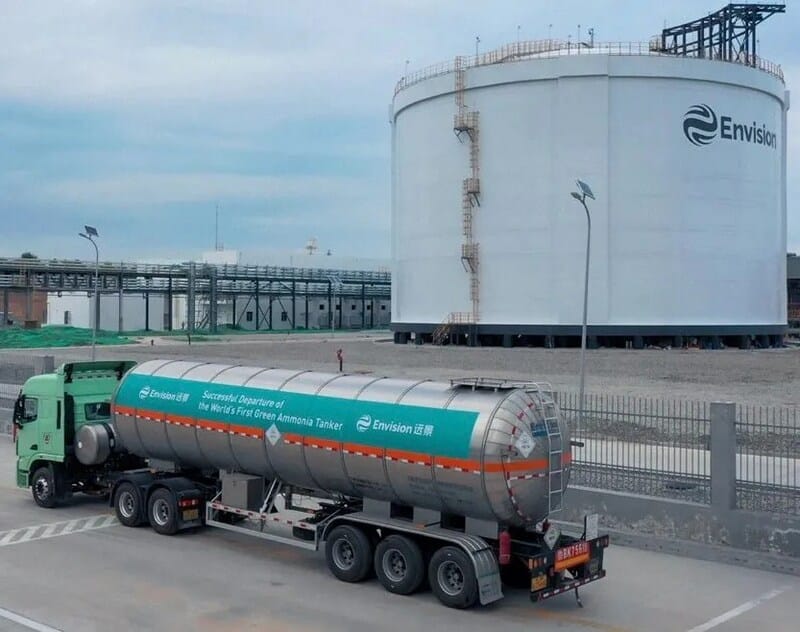Envision has commissioned what it claims is the world’s largest and most advanced green ammonia production facility.
Delivering 320,000 tonnes of green ammonia annually and operating entirely off-grid, the plant represents a significant convergence of renewable energy, AI integration, and industrial scalability. Located within the Chifeng Net Zero Industrial Park in China’s Inner Mongolia, the facility marks the first commercial-scale demonstration of AI-optimized green ammonia production powered exclusively by a standalone renewable energy system.
The project is underpinned by a proprietary off-grid system combining high-efficiency wind turbines, solar PV, grid-forming battery storage, and meteorologically informed AI optimization. This system ensures 24/7 operational stability without grid dependency—one of the sector’s most persistent bottlenecks in achieving reliable green hydrogen and derivative production.
Green hydrogen and ammonia production is typically hampered by renewable intermittency and grid congestion. Envision’s approach uses surplus electricity from renewables to power a dynamic air separation unit, storing energy as liquid nitrogen and balancing electrolyzer demand in real time. The plant’s electrolyzers adjust dynamically to fluctuations in solar and wind availability, increasing system efficiency and mitigating curtailment risk.
Envision’s configuration introduces a replicable system design that decouples hydrogen production from grid volatility while preserving process stability, potentially reshaping deployment economics for green fuels.
The plant has already secured offtake arrangements, with Japan’s Marubeni Corporation signing a long-term supply agreement that targets demand in fertilizers, chemicals, and maritime fuels. This positions the facility not only as a production site but as an early anchor in global green ammonia trade routes.
Exports are scheduled to begin in Q4 2025, facilitated by the recent departure of what is being called the world’s first green ammonia tanker. With global maritime regulators tightening emissions regulations and ammonia being considered a viable hydrogen carrier, this supply chain visibility adds further weight to green ammonia’s case as a decarbonization tool beyond fertilizer use.
Envision expects output to reach 1.5 million tonnes of green ammonia per year by 2028—approximately equivalent to displacing over 3 million tonnes of CO₂ annually based on fossil ammonia benchmarks. This growth forecast aligns with rising policy momentum and projected demand, particularly in Asia where Japan and South Korea are formalizing ammonia import strategies as part of their net-zero pathways.
The facility has obtained Bureau Veritas Renewable Ammonia Certification, verifying adherence to global benchmarks for safety, emissions, and sustainability. This third-party validation is likely to support bankability, particularly as green hydrogen and ammonia markets remain constrained by inconsistent standards and nascent regulation.
Stay updated on the latest in energy! Follow us on LinkedIn, Facebook, and X for real-time news and insights. Don’t miss out on exclusive interviews and webinars—subscribe to our YouTube channel today! Join our community and be part of the conversation shaping the future of energy.
